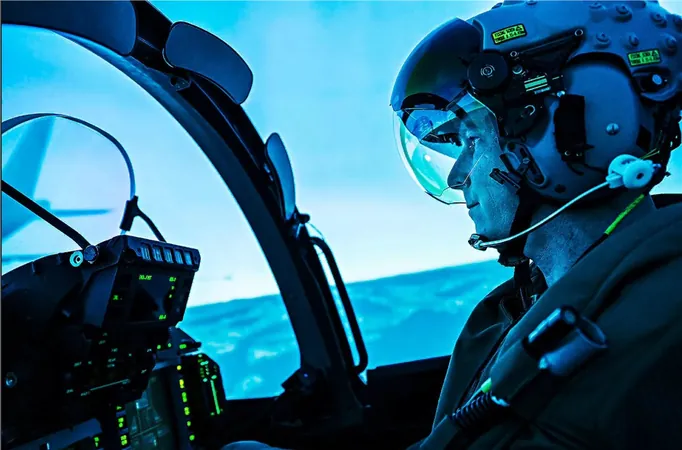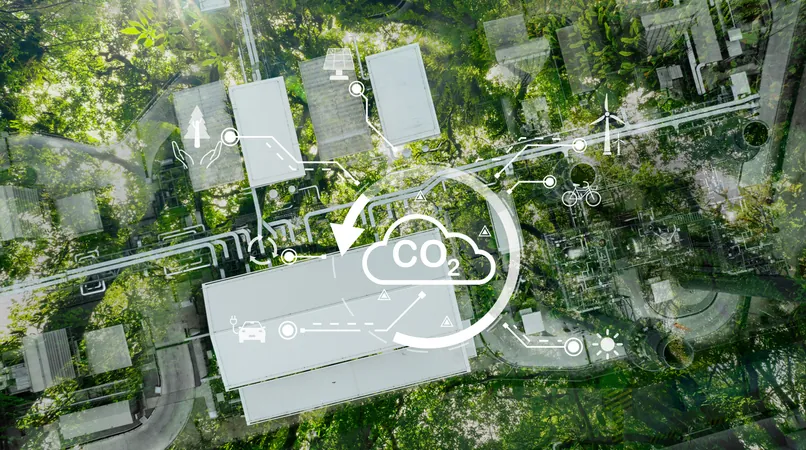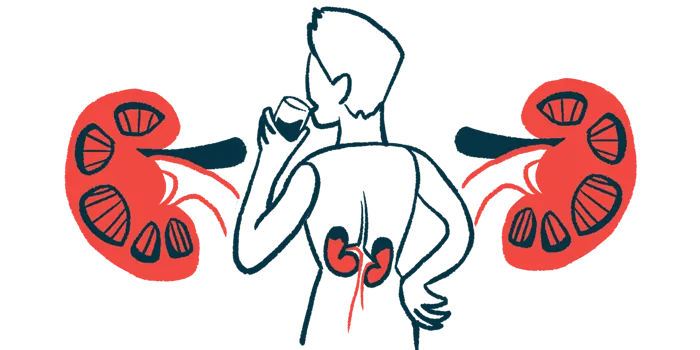
Soaring into the Future: Airbus Revolutionizes Fighter Cockpits
2025-04-09
Author: Ming
A Glimpse into Tomorrow's Cockpit
Imagine a cockpit transformed into a high-tech marvel where pilots command with the flick of a wrist and the power of their voice! Thanks to cutting-edge innovations, pilots will soon interact with adaptive interfaces and be immersed in displays that enhance every flight experience. A digital assistant will serve as a co-pilot, providing real-time updates, while a helmet-mounted system places critical mission information right in the pilot's line of sight. This revolutionary approach uses gesture control to acknowledge commands, allowing pilots to direct unmanned platforms seamlessly—all accompanied by haptic feedback from the control stick, giving them a tangible sense of engine speed and flight conditions. It's a blend of technology that mirrors the sci-fi ingenuity of superheroes like Iron Man.
Testing the Future with Airbus
In the Future Air Capabilities Prototyping Lab in Getafe, Madrid, Airbus test pilot José Ramón Asensi Miralles is at the forefront of this groundbreaking evolution. In a series of carefully orchestrated tests, he is using advanced goggles that detect hand gestures, enabling interaction with various cockpit systems in a simulated fighter environment. This initiative is part of the Enhanced Pilot Interfaces & Interactions for Fighter Cockpit (EPIIC) project, funded by the European Defence Fund, aiming to bolster Europe's defense future.
Empowering European Defense Capabilities
Airbus is taking the lead in the EPIIC project, focusing on innovative interaction modalities that redefine how pilots communicate with their aircraft. Belén Calleja, project manager at Airbus Defence and Space, emphasizes the importance of technology that enhances pilot efficiency: "From voice commands to gesture-based controls, every new feature is designed to empower the pilot." This initiative is crucial for ensuring that pilots can operate at peak performance during military air missions.
The Vision for Enhanced Interaction
During a recent test, the pilot made it clear that the goal is to validate a system capable of recognizing gestures without the need for traditional buttons or switches. While gesture control is groundbreaking, traditional control methods will still play a vital role. The HOTAS philosophy (Hands-On Throttle and Stick) remains essential; pilots will still rely on these fundamental controls to maintain flight safety. The goal is to create a seamless communication link between the pilot and the aircraft to improve efficiency during critical operations.
Harnessing AI for a Stronger Future
The EPIIC consortium boasts 27 European companies and academic partners, forming an innovative ecosystem aimed at establishing a strategically autonomous European defense sector. Calleja notes, “We’re focused on keeping European armed forces agile and technologically superior in an increasingly complex world.” A key aspect of this mission is to reduce reliance on third-party technologies, with Airbus collaborating with Multiverse Computing to integrate artificial intelligence into pilot interface development, creating more efficient systems that reduce energy consumption.
Eyes on the Future Combat Air System (FCAS)
Looking ahead, Airbus encourages a vision where technologies inspired by science fiction become reality. By 2026, the EPIIC project aims to present its most promising results for testing in simulated operational environments. This could potentially influence the design of the future combat air system (FCAS), developed collaboratively by France, Germany, and Spain. Future fighter jets connected to unmanned systems via cloud data will redefine air combat. As Tony Stark famously said, "It's not the suit, it's what you do with it." In this case, it’s not just the technology, but how it empowers pilots that will shape the future of defense.


 Brasil (PT)
Brasil (PT)
 Canada (EN)
Canada (EN)
 Chile (ES)
Chile (ES)
 Česko (CS)
Česko (CS)
 대한민국 (KO)
대한민국 (KO)
 España (ES)
España (ES)
 France (FR)
France (FR)
 Hong Kong (EN)
Hong Kong (EN)
 Italia (IT)
Italia (IT)
 日本 (JA)
日本 (JA)
 Magyarország (HU)
Magyarország (HU)
 Norge (NO)
Norge (NO)
 Polska (PL)
Polska (PL)
 Schweiz (DE)
Schweiz (DE)
 Singapore (EN)
Singapore (EN)
 Sverige (SV)
Sverige (SV)
 Suomi (FI)
Suomi (FI)
 Türkiye (TR)
Türkiye (TR)
 الإمارات العربية المتحدة (AR)
الإمارات العربية المتحدة (AR)